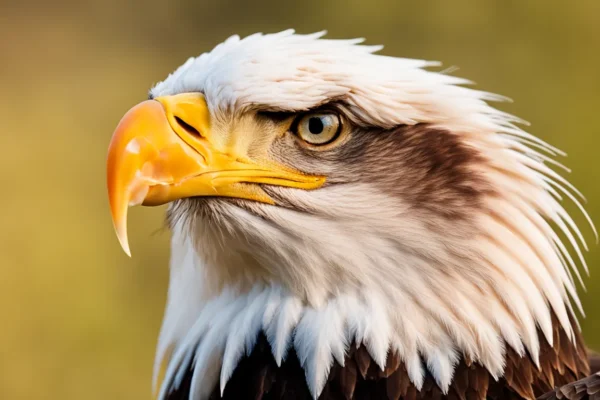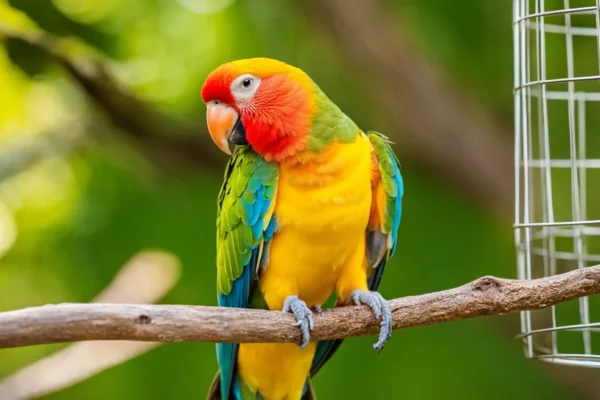The tufts on top of a bird’s head serve a variety of purposes, such as wooing and aggressiveness as well as communicating the bird’s emotional status and stress level. In avian terminology, these tufts are referred to as crests.
This article will pique your interest with its fascinating secrets and stunning collection of tufted-headed birds.
Birds with Head Tufts
Firstly, it should be noted that there are two sorts of tufts: ear tufts (seen on some species of owls, for example), which are formed of feathers but are too far down from the top of the head to be classified as crests.
The second kind of tufts are crests of various sizes and forms that are located atop the bird’s head. We’ll be looking at this type today.
It’s time for fourteen of the most stunning tufted-headed birds to model their “hairstyles” for you, so inhale deeply and get ready to be enthralled.
Tufted Duck

Northern Eurasia is home to the little diving duck known as the Tufted Duck (Aythya fuligula), commonly referred to as the Tufted Pochard.
The Tufted Duck’s carefree tuft of feathers that hangs down from the rear of the head helped it earn a spot on our list.
Due to the bird’s eating habit of diving under the surface of the water, which keeps its head wet most of the time and flattens its feathers against the head, the tuft is seldom seen.
The Tufted Duck is found in marshes, lakes, protected ponds, coastal lagoons, and shorelines. It consumes mollusks, water insects, and some kinds of vegetation.
Hooded Merganser

The genus Lophodytes (from the Greek lophos, which means “crest,” and dutes, which means “diver”) contains just one extant species, the Hooded Merganser (Lophodytes cucullatus).
The tufts on the heads of Hooded Mergansers, both male and female, create a crest that extends from the back of the head to the beak.
The male’s crest is black with white spots on each side, while the female’s has a pale reddish-brown color. When the bird lifts its crest during courting rituals, it is easier to see.
The Hooded Merganser inhabits forests next to rivers, streams, fresh and brackish estuaries, and pond borders. Its primary food source is fish, which it supplements with crustaceans and aquatic insects.
Northern Cardinal

The mid-sized songbird known as the Northern Cardinal (Cardinalis cardinalis) is a common backyard visitor in North America and Mexico.
The female is brownish with reddish wings and a tail, whereas the male is almost all red (except from his black face).
The crest that forms on top of the heads of Northern Cardinals, both men and females, is a tuft that is sharper in shape and richer in color in the male.
The habitats of Northern Cardinals include backyards, overgrown fields, swampy thickets, and the margins of forests. mostly shrubby places that are rich with fruits, seeds, and insects.
Steller’s Jay

The striking and ferocious Steller’s Jay (Cyanocitta stelleri) is easily recognized by its shaggy crest and black and blue plumage.
Two blue or white stripes run down the front of the head tuft, giving the bird two vertical, irate-appearing “eyebrows.”
The Steller’s Jay exhibits notable geographical variances. Populations residing in coniferous woods have shorter tufts of feathers, and those toward the coast have the darkest plumage.
The Steller’s Jay is an omnivore; it consumes seeds, nuts, fruits, eggs, nestlings, small rodents, and even tiny reptiles.
From Alaska to Nicaragua, Steller’s Jays are found across western North and Central America.
Erect-Crested Penguin

The tiny to medium-sized Erect-Crested Penguin, or Eudyptes sclateri, is native to New Zealand. It is the fourth heaviest penguin species still living and the biggest crested penguin species.
The yellow tufts that develop above their eyes to create a short, upright, brush-like crest help identify upright-Crested Penguins.
Outside of the mating season, the Erected-Crested Penguins inhabit the nearby maritime regions and pack ice. During the mating season, the birds will congregate in huge groups and build their nests on rocky terrain.
The Erect-Crested Penguin’s diet consists of krill and squid, however they sometimes indulge in little fish.
Great Curassow

Large and robust, the Great Curassow (Crax rubra) is a gregarious bird that prefers to live in small groups. It forages on the ground but builds its nests and roosts on trees.
The Great Curassow has distinct waving crests formed by curly tufts on both the male and female birds. The males have black plumage with a white belly, while the females have three different plumage morphs: barred, rufous, and dark.
The Great Curassow searches the ground for dropped fruits and seeds and, on occasion, digs for tiny vertebrates or arthropods in the dirt.
The original range of the bird is located in western Ecuador and southern Mexico, but regrettably, national parks and reserves are now the only areas left where this magnificent creature may find safety.
Green Lorie or Green Turaco

The Guinea Turaco, sometimes called Green Lorie or Green Turaco (Tauraco persa), is a little green bird that blends in with the canopy while remaining visible.
With their glossy plumage, black and white “makeup” around their eyes, and green head, neck, and breast, Guinea Turacos are very amazing to observe.
The Guinea Turaco has an erect tuft on its head that creates a round green crest, which may have a scarlet or purple tip, as if that weren’t enough.
The many different fruits, some flowers, and buds that grow in tropical and subtropical damp lowlands are consumed by guinea turacos.
The vast forests and savannas of West and Central Africa are home to the bird.
Victoria Crowned Pigeon

Large and blue-grey in color, the Victoria Crowned Pigeon (Goura victoria) has crimson eyes and black eye rings in addition to a maroon breast.
This magnificent beauty has a crest of blue feathers with white tips that resemble lace on top of her head.
The male Victoria Crowned Pigeon bends its head to the female during the courting ritual, reaches forward, waves his head up and down and swings its wide tail at the same time, and then raises its wings.
Insects are a complement to the seeds, flowers, and foliage that the Victoria Crowned Pigeon typically consumes.
Across northern New Guinea, the bird lives in lowlands and swamp woods, generally on ancient alluvial plains (including sago forests).
Andean Cock-of-the-Rock

Peru’s national bird, the Andean Cock-of-the-Rock (Rupicola peruvianus), is a medium-sized roosting bird.
The male Andean Cock-of-the-Rock is a sight to see, with a vivid red-orange cape, a black body, grey wings, and a noticeable tuft of feathers that forms a disk-shaped crest above its beak.
And since I said I would share some fascinating bird secrets, have a look at this!
In addition to its stunning appearance, the Andean Cock-of-the-Rock has an intricate mating ritual.
The males congregate in communal gathering places, or “leks,” where they show off their beautiful plumage and graceful movements. In order to mimic aggressive behaviors, rival males may begin to roost in pairs or small groups (bowing, beak-snapping, wing-flapping, squeaking, grunting, etc.). As a female arrives to assess their performance, the chaos and noise level skyrocket.[5]
In addition to fruits and seeds, the Andean Cock-of-the-Rock sometimes consumes insects and small animals.
The bird’s native habitat is the rocky, humid cloud forests of the Andes, although it may also be found throughout South America on ravines that are close to streams and bodies of water.
California Quail

The California Quail, or Valley Quail (Callipepla californica), is a tiny, spherical bird that inhabits the earth in small groups called “coveys.”
One of the California Quail’s favorite group hobbies is bathing in the sun on freshly churned or soft ground.
There are white stripes on the flanks and a scaled belly, and the plumage is brown and gray in tone. The face of male California Quails is black, and their tuft is longer and more wavy.
Six feathers form a tuft that falls in front of the face on both sexes; the tuft is brown on females and black on males.
Early in the morning, California Quail forage for seeds and leaves from a diverse range of plants, such as flowers, acorns, berries, and bulbs, by scratching the ground. It adds insects to its diet as necessary.
Since 1932, the California Quail has served as the official bird of California.
Grey Crowned Crane

The magnificent and towering Grey Crowned Crane (Balearica regulorum) is also referred to by a number of other names, including African Crowned Crane, Golden Crested Crane, Golden-Crowned Crane, Crested Crane, South-African Crane, Eastern Crowned Crane, African Crowned Crane, and East African Crowned Crane.
Naturally, the massive grey body of Grey Crowned Cranes, their white wings with brown and yellow-gold feathers, their white head sides, and the two red sacks under their beaks underlie this.
As if that weren’t enough, Grey Crowned Cranes have crown-shaped tufts of golden plumes around their heads.
The diet of the Grey Crowned Crane includes grass seeds, insects, small frogs, and other invertebrates, as well as potatoes, millet, and soy beans.
Originally hailing from the marshes and grasslands of eastern and southern Africa, Uganda’s national bird is the Grey Crowned Crane.
Royal Flycatcher

The medium-sized Amazonian Royal Flycatcher (Onychorhynchus coronatus) has a body plumage that is a mixture of dark brown and dark yellow, with a reddish-cinnamon rump and tail.
A stiff tuft produces a fan-shaped crest on both men and females; males have red crests, while females have yellow-orange crests.
The Amazonian Royal Flycatcher is an insectivorous bird that lives in damp lowlands among streams and seasonal floodplain forests, which is not unexpected given its name.
The Amazonian Royal Flycatcher is a single or pair-winged flutterer that inhabits the open, mid-level canopy.
European Crested Tit

One of the few birds in northern Europe with a tufted head as distinctive as this is the little songbird known as the European Crested Tit (Lophophanes cristatus).
The European Crested Tit has a white head with black eye rings, a curving black stripe on the cheeks, a black neckband, and greyish brown plumage on the back and wings.
Furthermore, this beauty may be easily identified by its well-known peaked tuft, which gives the bird the appearance of a crown.
The European Crested Tit lives in couples, much like other tits, and eats on caterpillars, insects, and seeds—particularly pine.
The coniferous woods of central and northern Europe, as well as the deciduous forests of France and the Iberian Peninsula, are frequent habitats for the European Crested Tit.
Golden Pheasant

The heavy-bodied, ground-feeding Golden Pheasant (Chrysolophus pictus), commonly referred to as the Chinese Pheasant or Rainbow Pheasant, is so colorful that it really deserves the name “rainbow.”
The male is amazing, even though the female’s duller, mottled brown plumage may not be as striking.
In addition to its striking body color, the male Golden Pheasant is striking due to its tuft that extends from the top of its head down its neck, giving it a cape-like appearance.
The Golden Pheasant is a timid and sensitive bird that lives best in places that are quiet and undisturbed. It is often found in woods and deep forests.
The bird eats insects, seeds, grains, berries, and larvae.
The Golden Pheasant is native to China’s mountain forests, but wild populations have spread across North America, the United States, Mexico, South and Central America, Australia, and New Zealand.


![Can Birds Eat Popcorn Kernels Safely? [Explained]](https://birdsology.com/wp-content/uploads/2024/01/14809.webp-600x400.webp)



